Corporate museums are part academic and business and occupy the grey zone in between. It is an organization that works with several departments in a company including public relations, branding, advertising, and HR. This series aims to look at the role, function, and future of museums run by corporations through interviews with PR professionals.
Printing is information communication that has supported the progress and development of mankind. This time, I’ll introduce Printing Museum, Tokyo operated by Toppan Inc., and discuss the social significance and the broad role of printing in Printing Culture Studies context, along with the core competence of the printing industry.
The Core Competence of the Printing Industry Conveyed by Printing Museum, Tokyo

Kazuki Kimura
What is printing? Printing defined in Printing Culture Studies
What do you think of when you hear the word “printing”? Many of you may have thought of printing a document typed up on a PC. This isn’t wrong, but it’s just one example of printing as a tool. Its significance and role are broader and deeper than we realize. We can learn about it in Printing Culture Studies, which the museum proposes, along with the history and progress of mankind. Operated by Toppan, Printing Museum, Tokyo is a place where you can get a firsthand experience with Printing Culture Studies. A visit to this museum will change the answer to the question, “What is printing?”
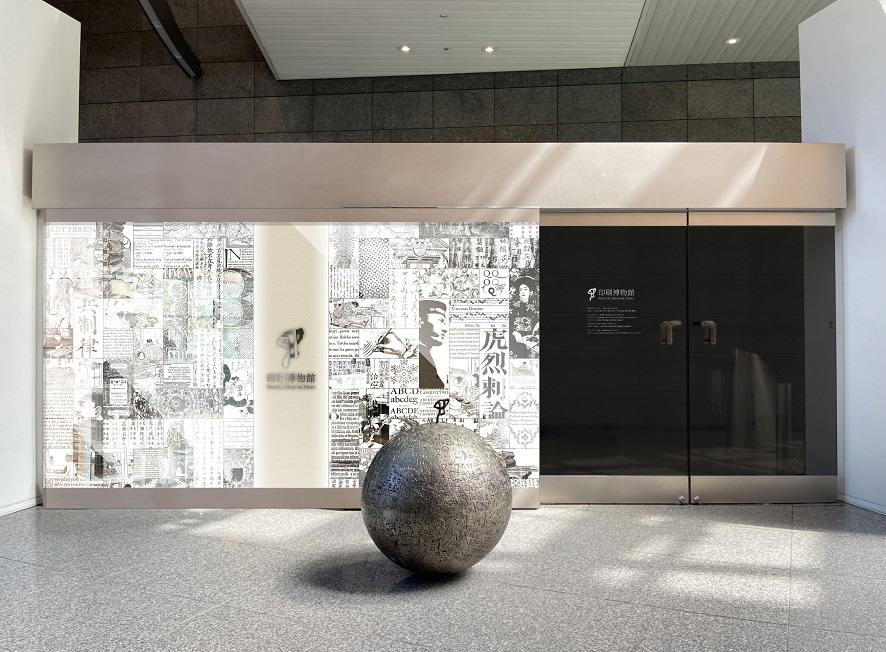
Entrance of the Printing Museum, Tokyo (Image courtesy of the Printing Museum, Tokyo)
A museum dedicated to collecting and conserving cultural properties and exploring history
The museum was established in 2000 at the Toppan Koishikawa Head Office Building in Bunkyo City, Tokyo as part of the company’s 100th anniversary project. With more than 70,000 items in its collection, the museum collects and archives materials related to printing culture, as well as reviews and explores the relationship between printing and society. Across 4,149 square meters, there’s a library, a museum shop, and the Printing House in addition to the exhibition rooms. The admission fee is 400 yen for adults, 200 yen for college students, 100 yen for high school students, and free of charge for junior high school students and younger. There are currently eight curators, and the average number of visitors is about 100 people a day, with the total number of visitors in the 20 years since its opening reaching about 640,000 (as of 2020).
In 2001, her Majesty the Empress of Japan (now Empress Emerita) visited the museum with her Majesty the Queen of Norway. In 2002, it was honored by the Japan Society for Exhibition Studies, and in 2012, it was ranked first in Asahi Shimbun’s “be” ranking for “corporate museums for adults to enjoy,” confirming that the museum is highly regarded for its importance and charm. In 2020, marking its 20th anniversary, the permanent exhibition was renewed and changed from being displayed thematically to chronologically, making it easier to understand the history of printing culture along with the flow of time.
Printing that supported human progress
When you enter the museum, you’ll see Prologue showing the evolution of human visual communication before you reach the permanent exhibition. Cave paintings from about 20,000 years ago can be considered the origin of communication. Like the creation of letters from murals and hieroglyphics, communication technology has evolved from manuscripts to printing and digital.
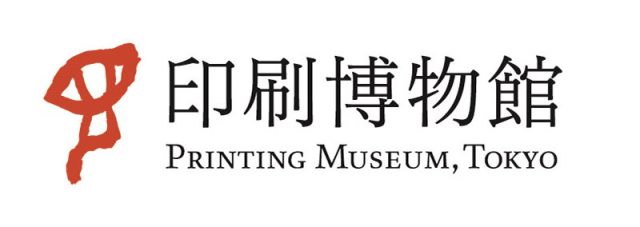
Logo of Printing Museum, Tokyo (Image courtesy of the Printing Museum, Tokyo)
By the way, the museum’s logo is actually an ancient Chinese ideogram which means “see.” This character was adopted because printing involves the act of “seeing,” meaning it’s one aspect of visual communication.
The evolution of human visual communication begins with this Prologue shown below. The permanent exhibition consists of three zones: History of Printing in Japan, History of Printing in Worldwide, and Printing and Technology.
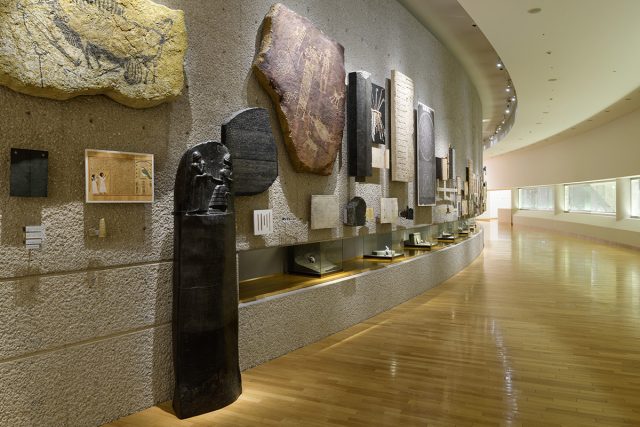
Prologue on display at the museum (Photo courtesy of the Printing Museum, Tokyo)
"Hyakumanto Dharani," the oldest existing printed material in the world
The first zone, History of Printing in Japan, dates back to the Nara period (710-794). Considered to be the world’s oldest extant printed materials, “Hyakumanto Dharani” is on display, and the date it was made is very clear. It was printed at the request of Empress Shotoku between 764 and 770.
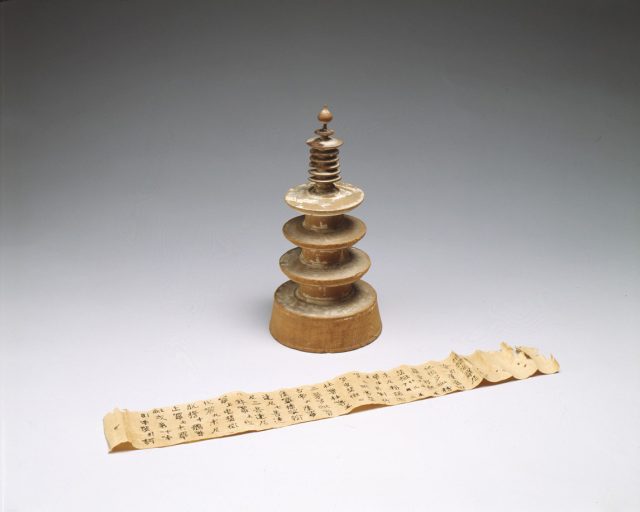
“Hyakumanto Dharani” (Image courtesy of the Printing Museum, Tokyo)
Printing was initially carried out primarily in temples when it began at the request of the Empress. However, in early modern times it spread to samurai and common people. Printing sites were developed in rural areas outside of Kamigata (Kyoto and Osaka area), and printed materials began to cover a wide range of topics from religion to philosophy. Since the modern era, it has become an indispensable part of politics, economics, and society, while its role in supporting the consumer society has continued to grow till the present day. You can understand the long history of printing in Japan and how deeply it has influenced our culture and society.
Printing with movable-type, one of the three major inventions of the Renaissance
In the second zone, History of Printing in Worldwide, you’ll get to know the history of printing throughout the world and how printing has affected us at turning points in world history, such as the Reformation, the French Revolution, the Industrial Revolution, and World Wars I and II. Johannes Gutenberg, who completed the Western letterpress printing in Germany in the 15th century, is an essential part of this history.
In medieval Europe, books were limited in number because they were copied by hand (manuscript), making them very valuable and expensive. After trying to think of a way to copy books quickly, Gutenberg came up with the idea of using metal type of lead, where letters were broken up one by one, and invented the movable-type printing press. The printing technology invented by Gutenberg is considered one of the three major inventions of the Renaissance, along with the compass and gunpowder. Gutenberg’s 42-line Bible (leaf), which has a high historical value as a printed book, is also on display.
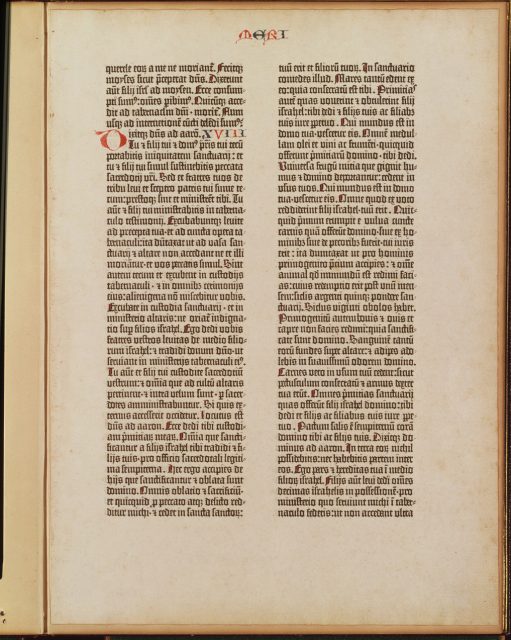
Gutenberg’s 42-line Bible (leaf) (Image courtesy of the Printing Museum, Tokyo)
The rapid spread of printing technology enabled an unparalleled number of books to be produced and changed the very nature of communication. It had an explosive impact on the scope that information could be communicated. Since then, it has greatly influenced various fields, such as the promotion of science and research, the communication of political and social information by news media, commercial use, and propaganda in war. You can see that the invention of printing technology has helped mankind progress dramatically worldwide.
The constant evolution of printing technology towards digital
The third zone, Printing and Technology, focuses on the technological aspect through a different perspective. You can catch a glimpse of the technological innovations that enabled printing to have such a great influence on the history of Japan and the world, as shown in the previous zones. This zone introduces various printing machines, the reproduction of color, digital printing, and the four types of plates as printing methods: relief printing, intaglio printing, planography, and stencil printing.
As introduced in the History of Printing in Japan, printing technology was also used for printing banknotes to prevent counterfeiting, supporting capitalism by security technology. Utilizing the Erhöht relief printing, state-of-the-art technology for its time, Toppan, which operates Printing Museum, Tokyo, was established as a startup around 1900.
After the permanent exhibitions made up of the three zones, you’ll find the Printing House. In addition to the printing machines exhibition and the introduction of typefaces, you can experience letterpress printing.
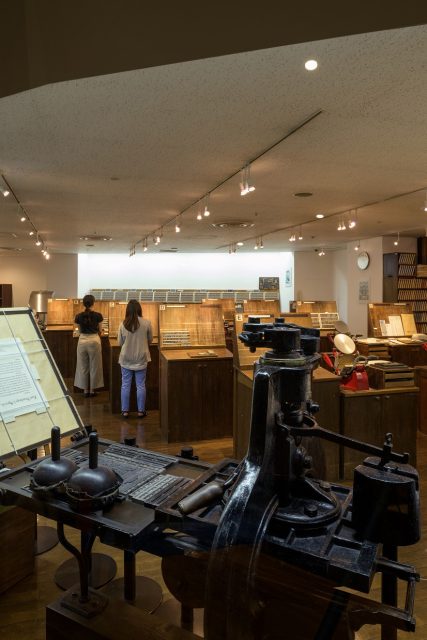
The Printing House (Photo courtesy of the Printing Museum, Tokyo)
Its significance as a corporate museum
From the perspective of a corporate museum, what significance or role does it have? I interviewed Yoko Shiki, a curator at Printing Museum, Tokyo, and an employee of Toppan. “This museum doesn’t directly advertise Toppan. Instead, it introduces the entire printing industry along with global perspective of its history across time. To mark our 100th anniversary as a leading company in the industry, we built this museum with the purpose of disseminating the role and contribution that the printing industry has played to society in history.”
Since there was no printing museum in Japan that conveyed the bigger picture of printing as an industry, the company decided to establish it as a CSR initiative. “Actually, there are museums related to printing all over the world. For example, an international consortium called the International Association of Printing Museums (IAPM) was launched in 2018. This consortium that printing museums from around the world joined, with Printing Museum, Tokyo as a founding member, discusses the dissemination of the significance of the printing industry in information communication on a global level.”
What are advantages that corporate-run museums have? “For example, even if you publish papers or disseminate information as an independent thematic museum, it may reach only a limited number of people who have an interest in the genre. On the other hand, by getting companies involved, I think that it’s easier to create contact points for more people and provide them with an entry point or an opportunity to pique their interest. Also, I feel that a corporate museum receives more benefits in financial or environmental aspects.”
Conversely, what advantages does Printing Museum, Tokyo offer a company? “A variety of people visit our museum, such as instructors from universities and vocational schools and their students, people in the industry like other printing and publishing companies, students involved in design, and people interested in culture. In addition, it’s used to invite customers and train new employees by Toppan and other companies in related industries. In terms of education, we contribute to the local community with neighboring elementary schools and visit universities to give on-site classes. Toppan has a wide range of business fields and stakeholders, so I think it’s good that various people can get interested in printing.”
Printing Museum, Tokyo not only exhibits its own collections, but also loans them to other museums in Japan and overseas for cooperative exhibitions. The museum also aims to develop Printing Culture Studies through publications such as “History of Japanese Printing Culture,” and cooperate in research and study at the request of educational institutions like the University of Tokyo and Joshibi University of Art and Design Junior College.
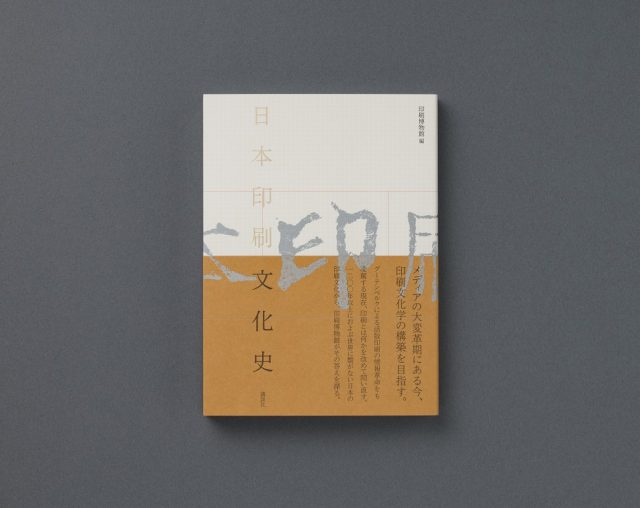
“History of Japanese Printing Culture” (Photo courtesy of the Museum)
The core competence of the printing industry as shown in history
From the interview with Ms. Shiki, we can see that Printing Museum, Tokyo focuses on conveying the role of the printing industry, rather than advertising the company. It’s a PR approach to building a good relationship with people to communicate what you want to say based on a public interest or social significance, as opposed to promoting it in a unilaterally. I’d like to think about how the museum works as a corporate museum with a good understanding of the industry.
Looking at Toppan, you’ll find they cover a wide range of business areas such as IC tags, semiconductors, displays, Décor materials, content and marketing, and DX, which is beyond the range associated with the word “printing.” However, the role of the printing industry that we learned from the museum tells us that they’re an extension of printing technology. The history in the Prologue and permanent exhibition show that printing is information communication that has supported the progress and development of mankind, and that the evolution of printing technology is an innovation that has made it possible.
The communication that the printing industry has been responsible for has always been universal, and the technology to realize that has always continued evolving. You can say communication and technological innovation are the core competence of the printing industry. All the businesses I mentioned earlier are extensions of this core competence, and looking back on history reveals a common starting point among those businesses that may seem broad and have few similarities at first glance.
Understanding the printing industry in the form of a corporate museum helps you understand the core competence of the industry, which leads to a better understanding and trust in a leading company like Toppan. For Toppan, which has many stakeholders due to its wide range of businesses, Printing Museum, Tokyo is a meaningful PR asset to strengthen relationships.
